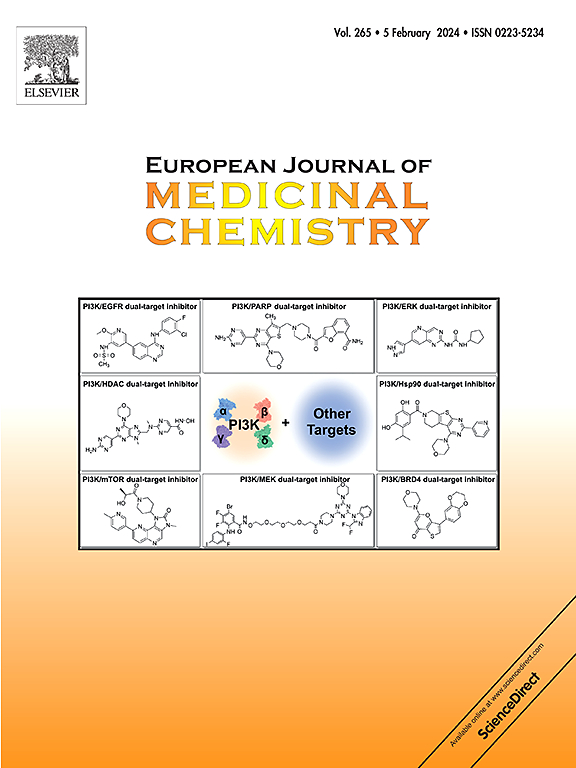Optimized ebselen derivatives as novel potent Escherichia coli β-glucuronidase covalent allosteric inhibitors
IF 6
2区 医学
Q1 CHEMISTRY, MEDICINAL
引用次数: 0
Abstract
Gut microbial β-glucuronidase (GUS) plays a key role in metabolizing compounds and influencing disease and drug metabolism, highlighting the need for potent inhibitors to improve drug efficacy and intestinal health. To identify Escherichia coli β-glucuronidase (EcGUS) inhibitors, we designed and synthesized fifty 1,2-benzoselenazol-3-one (BSEA) derivatives using a bioisosterism strategy. Among these, twenty-five BSEA derivatives demonstrated greater inhibitory efficacy than the most potent known EcGUS inhibitor, amoxapine (AMX), with compound 49 showing the strongest activity, achieving an IC50 of 12.9 nM. Structure–inhibitory activity relationship analysis suggested that modifications such as adding benzene rings or nitrogenous heterocycles to the BSEA scaffold enhanced inhibitory activity, influenced by the type and position of substituents. The LC−MS analysis confirmed that compounds 31 and 49 covalently modify Cys197 in EcGUS, and additional covalent linkage of compound 49 was observed on Cys28 and Cys443. In addition, the jump dilution assays proved that compounds 31 was irreversible covalent inhibitors, and its kinetic parameter kinact/KI were determined to be 21292.9 M−1s−1. The compounds 49 was reversible covalent inhibitors and its apparent steady-state inhibition constant Ki∗app were determined to be 23.33 nM. Molecular docking predicted specific interactions, such as hydrogen bonds involving Se and the pyrazole NH of compound 49 with Cys28 and Cys449, which may contribute to its inhibitory action. This study reports the first discovery of covalent inhibitors for EcGUS, with optimized BSEA derivatives acting as novel allosteric covalent inhibitors, revealing structure-activity relationships and molecular determinants that establish their potential in drug development.


求助全文
约1分钟内获得全文
求助全文
来源期刊
CiteScore
11.70
自引率
9.00%
发文量
863
审稿时长
29 days
期刊介绍:
The European Journal of Medicinal Chemistry is a global journal that publishes studies on all aspects of medicinal chemistry. It provides a medium for publication of original papers and also welcomes critical review papers.
A typical paper would report on the organic synthesis, characterization and pharmacological evaluation of compounds. Other topics of interest are drug design, QSAR, molecular modeling, drug-receptor interactions, molecular aspects of drug metabolism, prodrug synthesis and drug targeting. The journal expects manuscripts to present the rational for a study, provide insight into the design of compounds or understanding of mechanism, or clarify the targets.

 求助内容:
求助内容: 应助结果提醒方式:
应助结果提醒方式:


